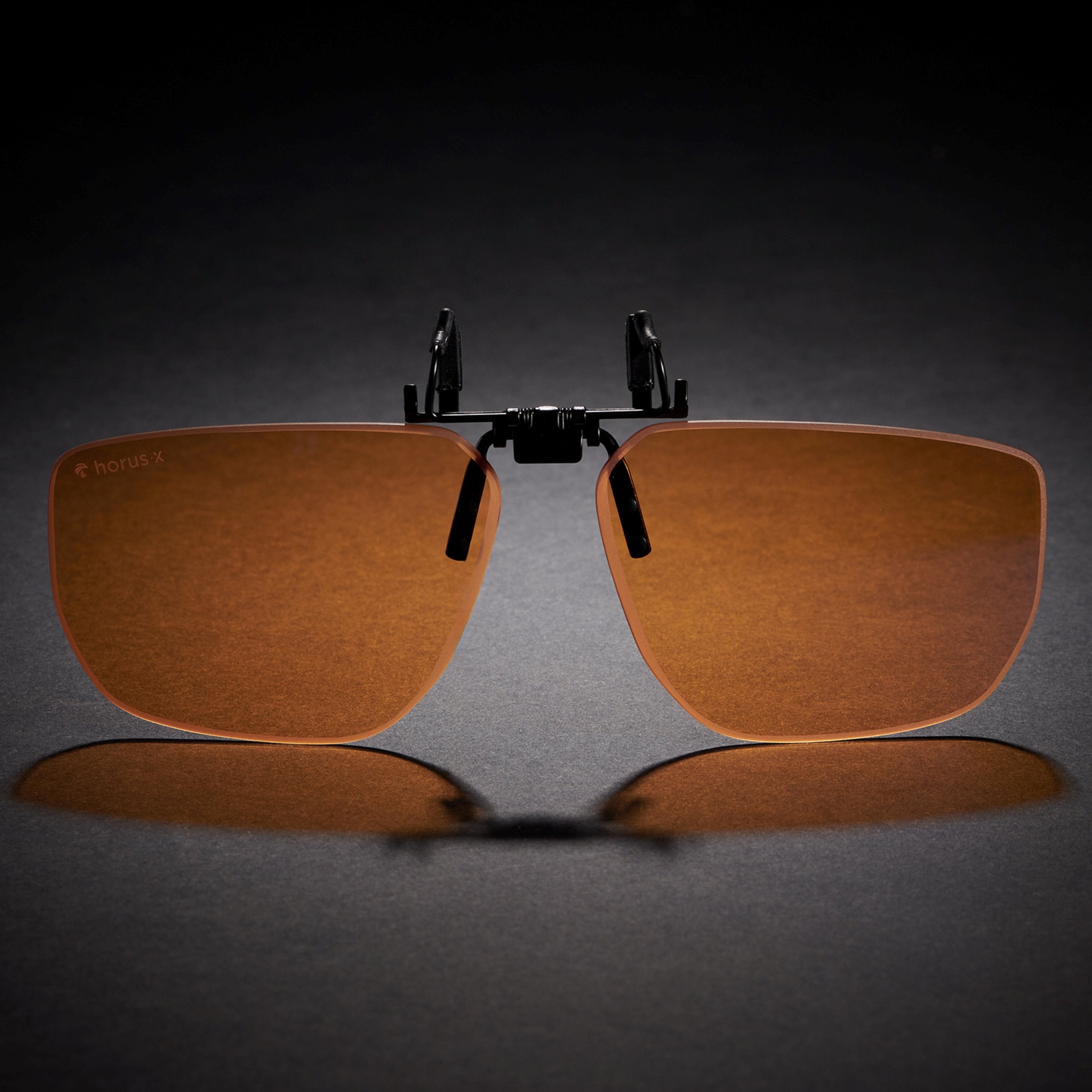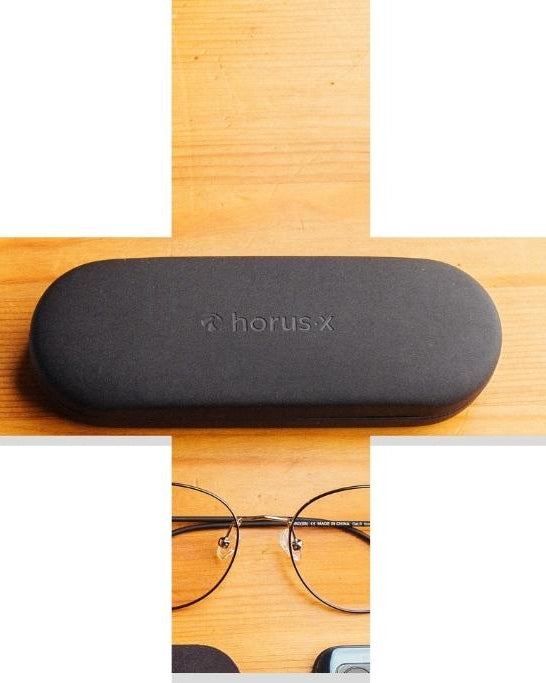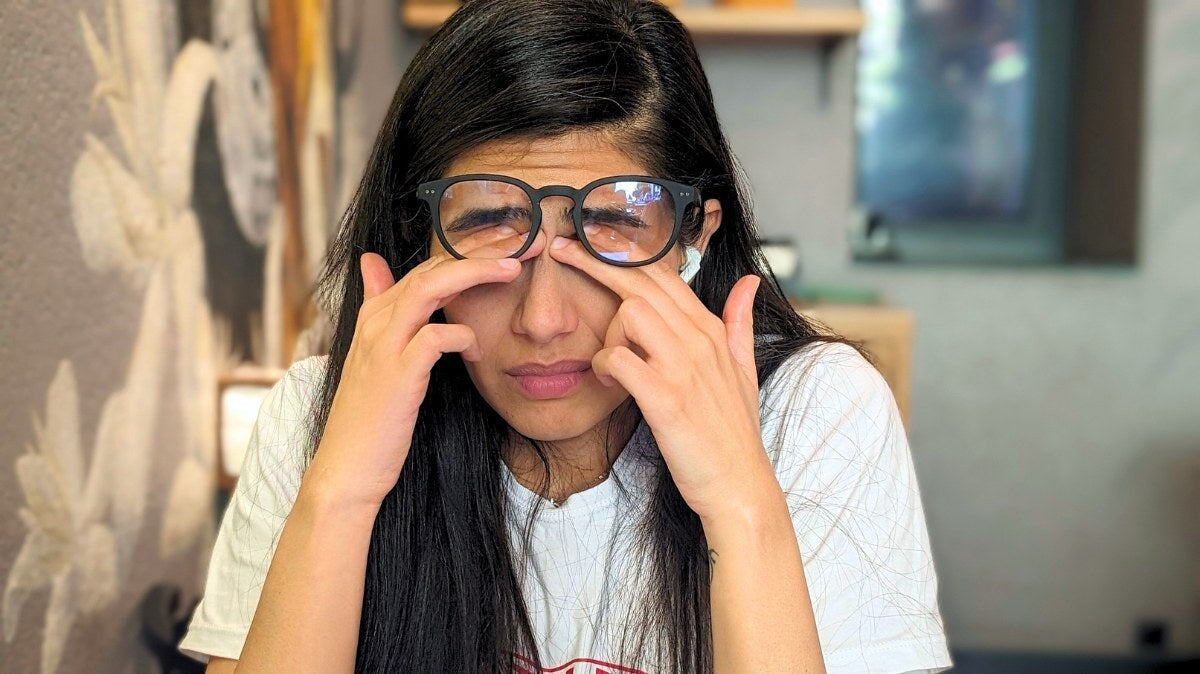If you’ve ever looked away from the TV or computer screen because your eyes are stinging and feel like they’re just about to water, then you’ve experienced Computer Vision Syndrome (CVS).
CVS or digital eye strain is that feeling of a thousand little needle pricks to your eyes after spending too long staring at a screen. But there are ways to help counteract it and keep your eyes healthier, for longer.
Computer Vision Syndrome & Digital Eye Strain: What is it?
The term Computer Vision Syndrome (CVS) is actually specific to North Americans, whereas the rest of the world more commonly refers to it as ‘digital eye strain’. Whichever you want to call it, it's not a whole lot of fun.
CVS refers to a host of vision problems resulting from the prolonged use of anything with a digital screen. That could be reading on your tablet, playing games on your computer, using your smartphone, contacting the space station, video calling with Brad Pitt...
You get the idea. What are the symptoms of computer vision syndrome?

Symptoms of Digital Eye Strain:
- General eye pain
- Headaches
- Blurred vision
- Double vision
- Dry eye, stinging eyes
- Irritated or red eyes
- General eye fatigue or eye discomfort
- Neck and shoulder pain
- Dizziness
- Difficulty with refocusing
You could suffer from one or several of these symptoms. It all depends on the screens you use, your eyes' sensitivity, and the longevity of your screen use across one or multiple sessions.
Origin: Why do screens hurt my eyes?
When you’re fixated on a screen for a long time without interruption, you’re not moving your eyes. This means your eye muscles gradually become stiff and struggle to recover from the intense focus needed to maintain constant eye contact with a nearby object.
And if you’re reading on a screen, that comes with its own challenges.
Letters on a screen are often not as sharp or defined as those on a page. The contrast of black on white can cause eyes to sting and the presence of reflections on the screen can be both distracting and make reading difficult.

The concentration and eye movement demands of viewing on a digital screen place further strain on your eyes. Most people also read on-screen at angles and from distances that wouldn’t be used for conventional reading and writing tasks, which also doesn’t help.
Basically, your visual system is under pressure (and not the fun Queen song type), and you have to strain to maintain clear visual consistency.
To recap, issues that can affect your experience on a digital screen are:
- Bad lighting
- Reflections
- Inadequate viewing distances
- Bad posture or seating position
- Using screens outdoors (UV light doesn’t help!)
- Untreated vision problems
- A combination of all the above
We can thank computer eye strain for our constant insistence on doing things our bodies aren’t capable of - in this case, our eyes.
How to reduce digital eye strain caused by screens
Of course, the obvious answer is to step away. But we all know that you’re not going to do that in the 12th hour of your Lord of the Rings Extended Edition rewatch; or in the middle of a death match with Rennala, Queen of the Full Moon on Elden Ring.
Let’s look at some other solutions that can help.
Finding a better balance: using the 20-20-20 method
The 20-20-20 method is an excellent and easy-to-remember mnemonic device that will delay and reduce computer vision syndrome.
Basically, for every 20 minutes looking at a screen, you should then stare at something 20 feet (6 meters) away from you, for a total of 20 seconds.
You don’t need to get out a measuring tape to do this, something approximately 6 feet away is fine. The important thing is that you’re focusing on a distant object, which causes your eyes to relax. This takes up to 20 seconds, which is why you should wait at least that long before returning to your screen.
Set an alarm on your phone or find a helpful app to remind you to periodically take breaks and do this so as to reduce your digital eye strain.
Protect yourself with screen glasses

One of the simplest and most effective ways to protect yourself from screen light is by popping on a pair of glasses designed for that purpose.
Screen glasses create a physical barrier between your eyes and your surroundings, minimizing the effects of digital eye strain.
Ideally, you want to look for glasses that have:
- 100% UV filtration
- Aggressive blue light filtering between 380-450 nanometers
- Anti reflective lenses
Not to toot our own horn, but Horus X glasses fit the bill on this completely. We use technologies that were developed for gamers, who are the people that deal with the most prolonged exposure to bright screens in darkened rooms. That’s why ours are the most effective glasses on the market.
Our development process had this in mind, so we can guarantee lifetime effectiveness and lessened eye strain that you’ll actually notice.
If you love a gamer or are one, you’ll know exactly what we’re talking about. Go and make sure yours is fed and watered now.
Thinking about blinking
Fun to say, admittedly not so fun to do. Plus, given blinking is usually a purely subconscious movement it’s actually pretty hard to develop a conscious habit of thinking about it.
But when you’re intensely concentrating on something (like winning that next round of Gwent), we often forget to blink. This means your eyes are taking the hit that might not be worth the win in-game.
Eye drops can also be helpful in alleviating the sting in your eyes, but that’s putting a plaster on the problem rather than finding a way to prevent it from happening again. So, always remember the opposite of what Doctor Who advises: “Don’t watch the screen, do look away, and whatever you do, blink.”
Stay hydrated
If your body is hydrated your eyes will be too. That can of Monster you’re chugging down might help you stay awake at 3am to win that final battle or watch that final episode, but it’s not going to help your eyes. There’s only one cold drink that does: water.
Try and keep a bottle next to your computer and bed so that hydration is always in easy reach.
Or if you’re feeling more bohemian, crack out the green tea. Its full of antioxidants and other healthy eye nutrients that lubricate your eyeballs and help protect against blue light.
Reduce glare and adjust ambient lighting
We all want that dream gaming or cinema set-up. And part of that can include bright neon lighting for some, or low, dim lighting for others. Neither of which are helpful for eye strain.
Bright light is one of the most prominent causes of eye strain, whether its outdoor sunlight or intense and unsuitable indoor lighting.
If your computer screen has a window directly behind it, then move it. The computer, not the window. This isn’t The Sims.
If you have neon lighting, consider replacing it with lamps that provide indirect “soft white” LED lighting - the closest to indirect natural light. Switching to full-spectrum lighting that mimics the natural brightness patterns of the sun is more pleasant for working on a screen, and reduces the chances of computer vision syndrome.
Or alternatively, purchase a pair of Horus X glasses for optimum screen viewing, relaxed eyes, and a pleasant gaming environment.
Adjust your screen settings
Brightness: Adjust your screens brightness to be roughly the same as the light around you. A good test is to hold up a piece of white A4 paper to the screen. Once your screen brightness matches the paper color, you’re at optimal level.
Text size and contrast: Adjust text size and contrast for comfort and easier reading or writing. In general, black print on a white background is the best combination for maximum comfort for most people. But if you have dyslexia, you might prefer a colored overlay to help you distinguish the letters from the background.
Color temperature: This technical term describes the spectrum of visible light emitted by a colored display. Blue light is the short-wavelength visible light that’s associated with eye strain, whereas orange and red hues are on a longer wavelength and are more comforting on the eyes. That’s why gamers often wear glasses with yellow lenses. It’s likely your screen has an integrated filter but you can still adjust this further, and the glasses will help even more. Check your cell - they often have an “eye comfort” or “blue light” setting for nighttime use.
Change screen
Still using one of the 90s big box computer screens? If so, welcome to the 21st century! Now throw it away.
CRT (cathode ray tube) monitors like these can cause headaches, nausea and eye strain thanks to their lower frame rate and tendency to flicker.
A high-resolution modern screen eliminates a lot of these problems, and our eyes like sharper images. Be nice to them. When choosing a new screen, look for the highest possible resolution at a higher frame rate.
And the bigger the better! We recommend a minimum of 19 inches for your desktop computer screen size.
Adjust your work or game station
Optimal setting = optimal gaming or work time.
Your general comfort is important too, putting eye strain aside for a second, we all spend hours hunched over at desks so to prevent issues when you’re older, its worth investing in the right equipment.
Plus, all these things can exacerbate each other - including your digital eye strain.
Remember these things for the comfiest working experience:
- Invest in a comfortable, ergonomic chair and ensure its adjusted to the right height for you
- A well-adjusted desk that suits your eye and seating level. Stand up desks can be a great alternative if you have back issues or want to look like you’re working much harder than the rest of us.
- Ensure your screen is the right distance (40-70cm) and the right angle so you’re not straining your neck and shoulder muscles.
The final word on computer vision syndrome/digital eye strain
The average person spends upwards of 6 hours a day looking at a screen. Unless you have bionic vision it’s impossible not to feel the effects of this overexposure to digital light.
We’re not saying to live a screen-free lifestyle - we love our screens! Whether it’s putting together a work presentation, binging a whole series in one day, or logging your sixth consecutive hour on Skyrim; screens allow us to perform essential and leisure tasks in our professional and personal lives.
Rather than putting them aside, it’s important to find a balance that lets you continue your work or play, without compromising your vision.
Remember to regularly consult your ophthalmologist / eye doctor to detect any eye problems and give you a proper diagnosis, and keep an eye on kids who would spend all day in front of them if given the choice.
Tell them they’ll get square eyes - that’ll scare them away for five minutes.
Other question and answers :
- Can you fix computer vision syndrome?
You can't really fully avoid it but you can prevent it by taking the cool steps we mentioned above.
- Is computer syndrome permanent?
Nope. This pain you get is temporary although it could get worse if you don't protect yourself.
- Who is at risk for computer vision syndrome?
You, me, your dog, your cat... yep, everyone that stares at a screen for too long.
- What are the long term effects of using a computer 8 hours a day?
First of all, get out there, go hug a tree you poor soul. Physical and psychological consequences could be important on the long term (body aches, mental fog...). We are not designed to watch a screen all day.
- What are the warning signs of too much screen time
When you pass out and wake up a few hours later in a pool of your own drool. Just kidding. Did you read our first paragraph about the symptoms of digital eye strain?
















